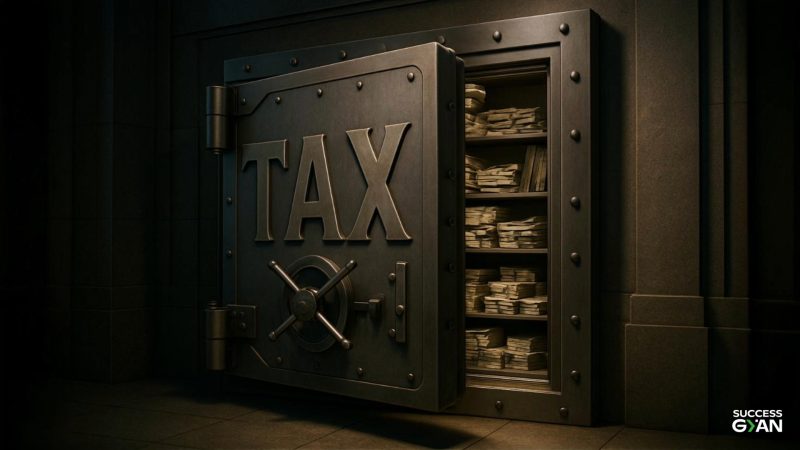

Save Tax: A Salaried Employee's Guide to Smart Tax Planning

What is Tax Planning and Why It Matters for Salaried Employees
Do you feel bad that much of your income is taken as taxes every month? But what if you could change that by managing your money better?
That’s where tax planning comes in. To pay less tax, you don’t have to break the law. It’s simply about making smarter choices with your income, expenses, and investments. There are many tax saving options for salaried employees that can help you save tax without breaking any laws. If you plan well, you can pay less tax and get closer to your financial goals.
Understanding the Fundamentals
Know Your Tax Regime: Old vs. New
Before tax planning, you must know what regime and tax slab you fall under. In India, there are two tax regimes: the Old Tax Regime and the New Tax Regime. And choosing the right one makes a huge difference.
Each regime has different slabs, rates, and most importantly, deductions and exemptions. Under the Old Regime, you can claim deductions under Section 80C, 80D, HRA (House Rent Allowance), LTA (Leave Travel Allowance) etc. These help reduce your taxable income significantly.
In the New Regime, most of these deductions are not available. But it offers lower tax rates and recently added a standard deduction of ₹75,000 (up from ₹50,000 in the Old Regime).
Tax-Saving Instruments and Deductions
Maximising Savings under Section 80C
Section 80C allows you to claim deductions up to ₹1.5 lakh on select investments and expenses. These are government-approved tools designed to reward you for building financial security.
Employee Provident Fund (EPF), Public Provident Fund (PPF), National Savings Certificate (NSC), Equity-Linked Savings Schemes (ELSS), life insurance premium payments qualify for deductions under Section 80C.
The principal amount you put in can also be claimed under Section 80C, but only if you choose the Old Tax Regime.
You don’t need to use everything, but combining a few investments smartly can lower your tax liability and boost your financial health.
Health is Wealth, and Tax Savings (Section 80D)
You can claim a deduction of up to ₹25,000 on health insurance premiums for yourself, your spouse and your dependent children. If you’re also paying for your parents’ health insurance, you can claim up to ₹25,000 more if they’re under 60 or ₹50,000 if they’re 60 or older.
That’s a total potential deduction of ₹1 lakh, just for doing the smart thing and getting insured. If you got a blood test or annual health screening done, you can claim up to ₹5,000 for preventive check-up costs. This amount is part of your overall Section 80D limit, not separate, but still worth claiming. Save tax while protecting your health.
These benefits are available only if you’ve opted for the Old Tax Regime. If you’ve moved to the New Regime, unfortunately, you miss out on this deduction
Planning for Retirement with NPS (Section 80CCD)
If you’ve been looking for a way to grow your retirement corpus and pay less tax, then the National Pension System (NPS) is for you. It’s one of the most tax-efficient investment tools and the government rewards you for using it! If you’re looking for long-term tax saving options, NPS is a reliable choice.
When you invest in NPS, there are two main sections under which you can claim deductions: Section 80CCD(1) and Section 80CCD(1B).
These deductions are only available under the Old Tax Regime. So if you’re using NPS to save tax, that’s the regime you want to be in. If your employer contributes to your NPS account, you can claim a separate deduction under Section 80CCD(2). It’s not within the 80C or 80CCD(1B) limit. It is totally separate.
Home Loan Benefits (Section 24B & 80C/80EE)
Buying a home isn’t just a big milestone. It can also be a powerful way to save on taxes if you know where to look.
Under Section 24B, you can claim up to ₹2,00,000 as a tax exemption on the interest you pay on your home loan every year. Yes, your EMI could be a hidden tax saving option that helps you reduce taxable income effectively!
The principal repayment part of your EMI is covered under Section 80C. But remember this benefit is only available if you opt for the Old Tax Regime. So, if you’re still claiming deductions, this one’s worth using.
And if you’re a first-time homebuyer, don’t stop there! Look into Section 80EE. You could get additional deductions if you meet the eligibility criteria.
Education Loan Interest (Section 80E)
If you’re paying off a student loan, Section 80E is your financial lifesaver. It lets you claim 100% of the interest paid on your education loan as a tax deduction. Yes, no upper limit! That means every rupee of interest you pay can help cut down your taxable income.
This benefit lasts for up to 8 years, or until you finish repaying the loan. Whichever comes first. So the faster you repay, the quicker you save. But even if it takes longer, the tax benefit sticks with you for a solid stretch. This deduction is only available under the Old Tax Regime.
Claiming Rent Expenses (HRA / Section 80GG)
If you’re living in a rented house and getting House Rent Allowance (HRA) from your employer, there’s good news. You could save big on taxes under Section 10(13A) of the Income Tax Act. The amount you can claim as HRA exemption isn’t just the full HRA you receive. It’s calculated as the lowest of these three:
The actual HRA you get from your employer
50% of your salary (if you’re in a metro) or 40% (if you’re in a non-metro)
The rent you pay minus 10% of your salary
Whichever number is smallest, that’s your HRA exemption. This benefit only applies if you’re sticking with the Old Tax Regime. If you’ve opted for the New Tax Regime, this deduction is off the table. A little paperwork can go a long way in saving thousands in tax!
Leave Travel Allowance (LTA)
Love taking vacations? Here’s a little-known perk that makes your travel even sweeter: Leave Travel Allowance (LTA). If you’re a salaried employee planning a trip within India, you can claim a tax exemption on the travel expenses. This benefit is allowed only twice in a block of four calendar years. The exemption only covers travel fare (not hotel stays or food).
Tax-Free Reimbursements and Perquisites:
Did you know that certain allowances provided by your employer, like meal coupons, telephone or internet reimbursements, and uniform allowances, can either be fully tax-free or partially taxable?
It’s a nice perk, right? These deductions are only available under the Old Tax Regime.
Conclusion
Understanding the tax slabs, available deductions and exemptions in both the Old and New Tax Regimes is key to finding the one that works best for you. A well-thought-out tax plan isn’t just about saving money. If you know the right tax saving strategies to reduce your taxable income, you can use them to fuel your bigger financial goals. Tax planning helps you get there faster while paying less tax.
Tax laws can get tricky, so it’s always a good idea to seek expert advice. A tax consultant or Chartered Accountant (CA) can help you navigate the process and make the best choices for your situation.
Frequently Asked Questions (FAQs)
Understand both regimes and your salary structure
Start investing early in the year
Keep records of proofs and receipts
Take professional advice if needed
Review your plan annually
You can:
Use online income tax calculators
Refer to official tax slabs
Consult a tax professional for personalized advice
Yes. All salaried employees are eligible for a standard deduction of ₹50,000 per financial year (available in both regimes as of FY 2023–24).
Compare your tax liability under both regimes using a tax calculator.
If you claim many deductions (HRA, 80C, 80D, etc.), the old regime may be better.
If not, the new regime may result in lower taxes.
- Understand both regimes and your salary structure
- Start investing early in the year
- Keep records of proofs and receipts
- Take professional advice if needed
- Review your plan annually
You can:
- Use online income tax calculators
- Refer to official tax slabs
- Consult a tax professional for personalized advice
Yes. All salaried employees are eligible for a standard deduction of ₹50,000 per financial year (available in both regimes as of FY 2023–24).
Compare your tax liability under both regimes using a tax calculator.
If you claim many deductions (HRA, 80C, 80D, etc.), the old regime may be better.
If not, the new regime may result in lower taxes.

Millionaire Mind Intensive is about unlocking your financial freedom and strengthening your relationship with money.
Quick Links
Contact Info
Success Gyan India LLP
S5, Thiru Vi Ka Industrial Estate,
Guindy, Chennai – 600032







